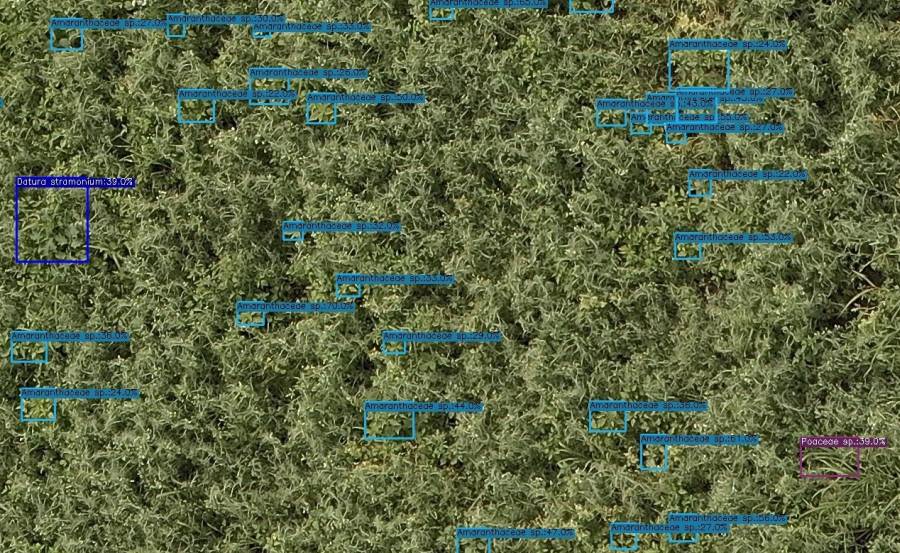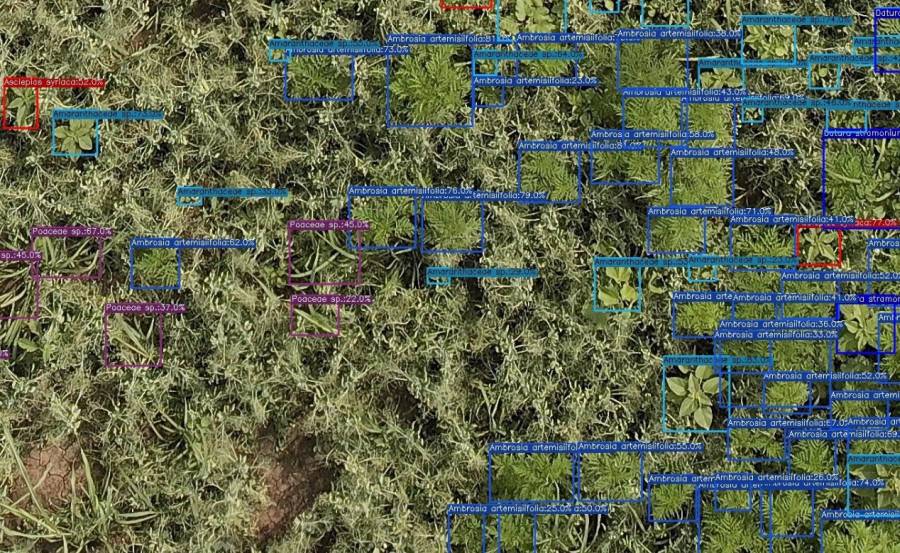How AI Is Taking Green-on-Green Spray Technology to New Levels of Productivity and Sustainability
Precision farming is continually evolving, with ongoing advancements in AI computer vision, specifically within the field of “green on green” technology. In previous years, the “green on brown” technology was widespread. This system could identify weeds on the fallow fields and address them through spot spraying, relying on color differences to distinguish between weedy and clean zones.
In contrast, “green on green” technology differentiates between weeds and cultivated plants based on leaf morphological characteristics and other visual factors. This system can detect weeds in green crops.
In practice, this involves creating a weed map through AI analysis after the drone survey. This map shows the weed species composition in the area, providing farmers with precise information on the location of weeds. Armed with this data, farmers can make well-founded decisions on mixing chemicals, areas to treat, and the pace of application depending on the infestation levels of different zones.
In a recent survey of a pea (Pisum sativum) field, several weed categories were identified: ragweed (Ambrosia artemiisifolia), common milkweed (Asclepias syriaca), jimsonweed (Datura stramonium), german chamomile (Matricaria recutita), amaranth family (Amaranthaceae sp.).
MORE BY KSENIA KOROLKOVA
How to Avoid the Top 10 Most Common Mistakes in Agricultural Drone Surveying
One of our clients, a major player on the food market, approached Proofminder to help them fight a significant jimsonweed issue. High resolution drone images were collected by our partner, drone service provider Drone Deer in Hungary, uploaded to Proofminder’s platform, and analyzed by Proofminder’s AI model. Proofminder not only detected jimsonweed and provided the GPS coordinates of the weeds for precision spraying, but also identified and located the four other most common weed species. This information enabled the client to plan accurate weed management actions, only applying chemicals in the areas where it was necessary.
Due to these actions, the client was able to significantly improve food safety and reduce the cost of spraying dramatically. Identifying different weed species and distinguishing between similar weeds in a dense and lush vegetation was previously challenging, however, Proofminder’s platform now provides never-before-seen accuracy in weed maps that can help you in making the best weed management decisions.

Figure 1 – Jimsonweed and other weeds identified in green pea by Proofminder AI model.
Furthermore, Figure 2 depicts the AI-recognized location and density of the weeds.

Figure 2 – Various weeds and their GPS coordinates and density identified by AI for further hyper-precise spraying.

How is this achieved?
- Chemical usage can be decreased by up to 70% through spot spraying.
- The cost of chemicals can be decreased.
- Resistant or harder-to-treat weeds can be identified, allowing for the targeted use of larger quantities of herbicides or more expensive chemicals.
- Machine operating costs can be optimized.
- Reduced fuel consumption leads to lower carbon dioxide emissions.
- Time and resources are saved by avoiding unnecessary spraying.
- Weed maps and spray logs allow year-to-year comparison.
- Tracking the presence of weeds during different spraying cycles becomes possible. We can tell which weeds are more difficult to treat or even resistant, and if any have freshly appeared.
- Based on the above, spraying times and rates can be optimized in different areas.
To learn more about how the AI model for green-on-green identification can improve your production processes, click here.









